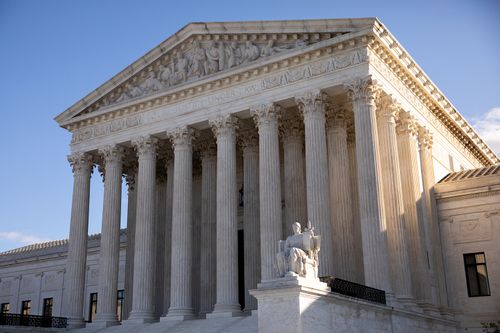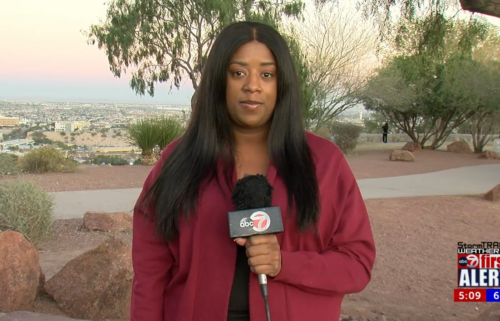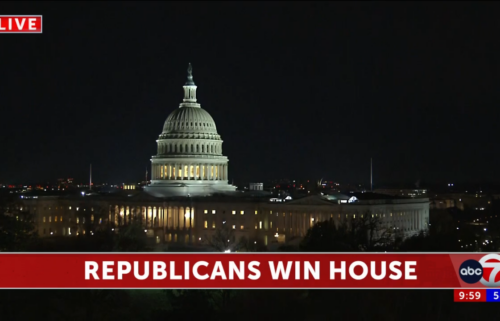Supreme Court’s liberal justices lash out at unprecedented ‘rush’ of executions as Trump leaves office

As the country focused on the aftermath of riots in the US Capitol and the unprecedented second impeachment of President Donald Trump, the liberal justices of the Supreme Court spent Trump’s last full week in office battling his administration’s long-term objective to execute 13 federal death row inmates in six months.
Late Friday night, over the fiery objection of two Supreme Court justices, Dustin John Higgs became the 13th federal inmate to be put to death. It marked the last federal execution to take place under the Trump administration that announced in July 2019 that it was reinstating the federal death penalty after a nearly two-decade pause. Then-Attorney General William Barr said that his office owed it to the victims and their families to carry forward sentences imposed by the justice system.
But Justice Stephen Breyer — the only sitting justice who believes the court should reconsider the constitutionality of the death penalty — and Justice Sonia Sotomayor lashed out in a late-night order that recounted details of all the executions.
“This is not justice,” Sotomayor wrote, noting that Higgs was the third federal execution in a week and the 13th overall.
Turning her attention to all of the executions Sotomayor wrote: “To put that in historical context, the Federal Government will have executed more than three times as many people in the last six months than it had in the previous six decades.”
She said the government should have proceeded with “some measure of restraint” instead of moving with an “unprecedented rush” amid questions concerning the Justice Department’s drug protocol, the Federal Death Penalty Act and other disputes.
She also turned her attention to her conservative colleagues who she said have “repeatedly sidestepped” their usual deliberative processes, allowing the government “to push forward with an unprecedented, breakneck timetable of executions.”
She walked through many of the claims presented and how lower court judges had at times ruled in favor of the inmates only to be overturned. She noted particularly that back in December both inmate Corey Johnson and Higgs, both executed this week, tested positive for Covid-19.
“There can be no ‘justice on the fly’ in matters of life and death,” Sotomayor wrote. “Yet the Court has allowed the United States to execute thirteen people in six months under a statutory scheme and regulatory protocol that have received inadequate scrutiny, without resolving the serious claims the condemned individuals raised,” she said.
While saying she “respectfully” dissented, she added, “Those whom the Government executed during this endeavor deserved more from this Court.”
As for Breyer, now the most senior liberal on the court, he named each of the inmates. He noted that a lower court judge held that Higgs had significant lung damage and executing him by injection of pentobarbital would “subject him to a sensation of drowning akin to waterboarding” because of his Covid-19 infection.
Breyer said the court needed to address a myriad of questions including whether the government’s protocol risks extreme pain and needless suffering. He said that all of the claims brought — many last-minute — were not frivolous.
“What are courts to do when faced with legal questions of this kind?” he asked. “Are they supposed to ‘hurry up, hurry up?” He again called for a reconsideration of the constitutionality of the death penalty itself.
Justice Elena Kagan also dissented but chose not to join Sotomayor or Breyer or explain her thinking separately.
Late Friday the conservative justices chose not to write, although the issue concerning the death penalty, in general, has triggered vigorous debates between the justices in the past.
In December 2019, the court denied an appeal by the government when a District Court judge temporarily blocked the federal government from carrying out executions. Justice Samuel Alito, joined by Justices Brett Kavanaugh and Neil Gorsuch, agreed to deny the emergency application but said he thought the government was “very likely” to ultimately prevail in what Alito called “exceptionally heinous murders.” He urged the appeals court to proceed with “appropriate dispatch” to move forward with the case.
In its final appeal to the Supreme Court, acting Solicitor General Jeff Wall told the justices that Higgs had received nine sentences of death in 2001 “in connection with the cold-blooded murder of three women on federal land near the Baltimore-Washington Parkway.” He said that a lower court that had put the execution on hold was “unprecedented and untenable” and that the execution should be allowed to go forward.
“As this Court has repeatedly emphasized,” Wall wrote,” both the government and the victims of crime have an important interest in the timely enforcement of a death sentence.”




